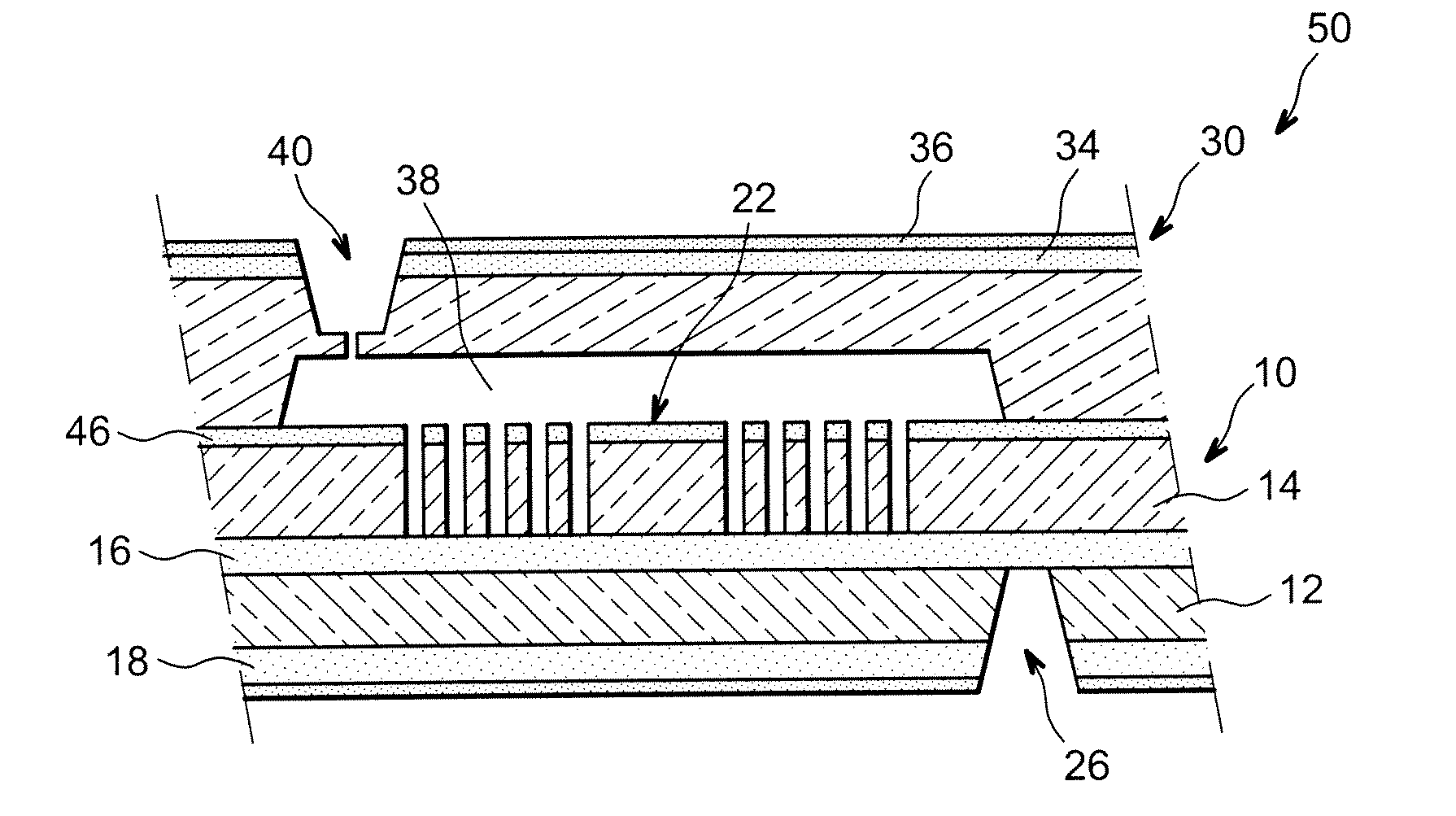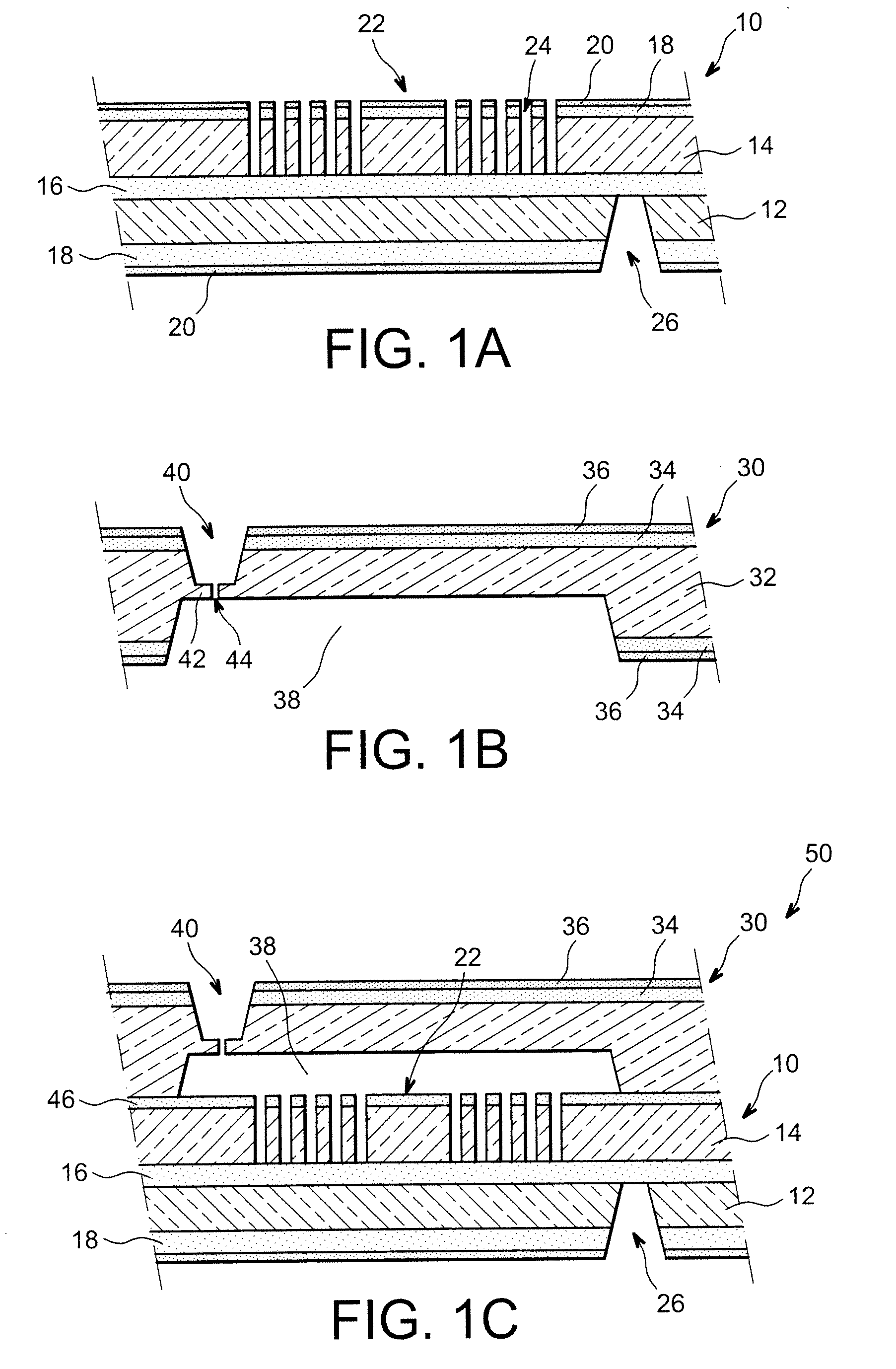Encapsulation in a hermetic cavity of a microelectronic composite, particularly of a MEMS
- Summary
- Abstract
- Description
- Claims
- Application Information
AI Technical Summary
Problems solved by technology
Method used
Image
Examples
Embodiment Construction
[0011]The invention proposes, among other advantages, to remedy the drawbacks of the existing technologies and use the direct bonding technique with wet surface preparation for composites comprising micro-electro-mechanical systems.
[0012]In fact, according to the invention, direct bonding is performed before the release of the MEMS structures: these structures remain attached to the substrate during the cover transfer by a sacrificial layer, particularly consisting of SiO2, which is removed after bonding by means of a vapour treatment, for example with hydrofluoric acid, preventing adhesions. The cavity is subsequently placed in a controlled atmosphere by filling the vents used for the release of the MEMS structure.
[0013]More generally, according to the invention, both constituent parts of the microelectronic composite, the cover and the substrate, respectively, are each prepared on their wafer of material, with formations of the cavity and slot of the MEMS structure to a sacrificia...
PUM
 Login to View More
Login to View More Abstract
Description
Claims
Application Information
 Login to View More
Login to View More - R&D
- Intellectual Property
- Life Sciences
- Materials
- Tech Scout
- Unparalleled Data Quality
- Higher Quality Content
- 60% Fewer Hallucinations
Browse by: Latest US Patents, China's latest patents, Technical Efficacy Thesaurus, Application Domain, Technology Topic, Popular Technical Reports.
© 2025 PatSnap. All rights reserved.Legal|Privacy policy|Modern Slavery Act Transparency Statement|Sitemap|About US| Contact US: help@patsnap.com



